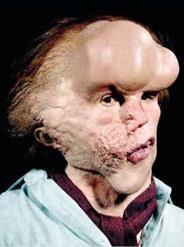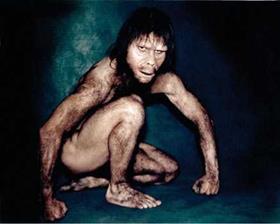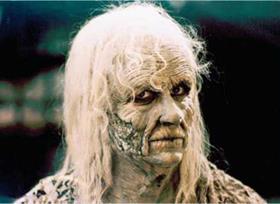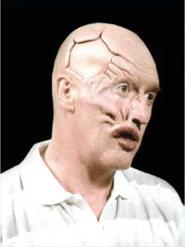■ Preapplication skin care
■ ![]() Types of adhesives
Types of adhesives
■ Application techniques
■ Removing the makeup appliance
■ Types of removers
■ Removal techniques
■ Post-removal skin care
The process of applying 3D prosthetic appliances has in many ways come full circle. In the days of what is considered the first modern use of foam latex prosthetic appliances, the 1940s and 1950s, the appliances were made as one piece; they were essentially masks. These one-piece foam latex appliances continued to be the norm until the late 1960s, when it is believed that iconic makeup artist Dick Smith became the first to employ the use of multiple overlapping partial appliances to create a complete makeup—on Dustin Hoffman as the 121-year – old Jack Crabb in Little Big Man.
That process set a new standard of prosthetic appliance application and continues to be the standard method of application. However, the one-piece appliance never went away and has begun to see a resurgence in popularity, particularly in television, where time for application is in short supply. This chapter examines
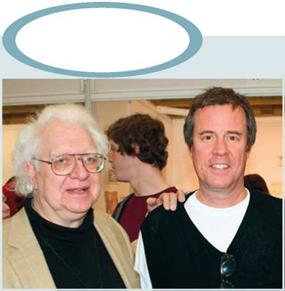 each method, both one-piece and multipiece; you will most likely have occasion to use both in your career. The one-piece continuous appliance is being used with amazing results by Neill Gorton, whose silicone appliances are astonishingly real, even in tight close-up. The multipiece overlapping approach is also used to great effect by makeup artists. The chief difference between the one-piece and the multipiece approach is in the number of pieces and the time it takes to apply them. The results can be equally stunning.
each method, both one-piece and multipiece; you will most likely have occasion to use both in your career. The one-piece continuous appliance is being used with amazing results by Neill Gorton, whose silicone appliances are astonishingly real, even in tight close-up. The multipiece overlapping approach is also used to great effect by makeup artists. The chief difference between the one-piece and the multipiece approach is in the number of pieces and the time it takes to apply them. The results can be equally stunning.

FIGURE 7.1
Christopher Tucker and the author at IMATS, London, 2008. Photo by the author.
Christopher Tucker is a legend to fans and artists alike; he certainly is to me. He was born in Hertford, England, and studied at London’s famed Guildhall School of Drama and Music, and became. . . an opera singer. His film career began with no less than a lavish production of Julius Caesar starring Charlton Heston and Sir John Gielgud. He also created all the age makeup for the award-winning BBC series I, Claudius.
His reputation as a brilliant makeup artist led to designing and creating age, character, fantasy, celebrity look-alikes, animatronic makeup effects, and prosthetics for film, television, commercial, and stage productions in both Great
|
FIGURE 7.2 Actor John Hurt as The Elephant Man. Image reproduced by permission of Christopher Tucker. |
Britain and abroad. Christopher has pioneered numerous techniques and the use of materials such as foam latex, silicone, and gelatin. He also designed the first animatronic eye for a television commercial.
Christopher made it possible for an American actor to turn into a werewolf in one take without use of digital effects for The Company of Wolves. His early men in Quest for Fire won both an Oscar and a BAFTA for makeup, and his work on the creature characters in the Star Wars Episode IV cantina scene is still a topic of conversation among
|
FIGURE 7.3 Neanderthal Man for the French Ministry of Culture. Image reproduced by permission of Christopher Tucker. |
Star Wars devotees. His interests in science, chemistry, engineering, sculpting, and photography have greatly helped in this changing world of special makeup effects; he is also fluent in computer-created image creation and manipulation with programs such as Photoshop.
|
FIGURE 7.4 Actress Darryl Hannah from High Spirits. Image reproduced by permission of Christopher Tucker. |
|
FIGURE 7.5 Actor and singer Michael Crawford in Phantom makeup for Phantom of the Opera. Image reproduced by permission of Christopher Tucker. |
The Royal Shakespeare Theatre asked Christopher to create the hump for Richard III and the Cyrano de Bergerac noses for Sir Derek Jacobi. Christopher considers the peak of his career came when David Lynch asked him to save his film The Elephant Man and design and fabricate the Elephant Man makeup for John Hurt. No other previous makeup had been so involved; the head had 15 different foam latex and silicone rubber parts, some of them overlapping (which had never before been attempted). It took seven hours to apply and was used only on alternative days of shooting and rehearsing.
![]() Christopher is also responsible for the Phantom of the Opera makeup designed for the original production starring Michael Crawford in London; he continues to be involved with Phantom. He has been educating makeup artists at home and abroad and continues to be highly sought as a lecturer by professionals in medicine, education, and entertainment.
Christopher is also responsible for the Phantom of the Opera makeup designed for the original production starring Michael Crawford in London; he continues to be involved with Phantom. He has been educating makeup artists at home and abroad and continues to be highly sought as a lecturer by professionals in medicine, education, and entertainment.
![]()

